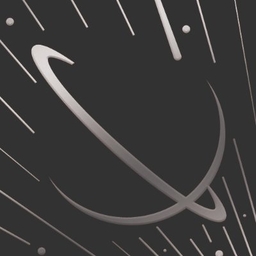
Keith Cooper
Science journalist/editor specialising in astrophysics, cosmology, astrobiology, SETI, planetary science. Author of The Contact Paradox and Amazing Worlds.
Articles
-
1 week ago |
yahoo.com | Keith Cooper
When you buy through links on our articles, Future and its syndication partners may earn a commission. Apollo 17's Harrison Schmitt in the Taurus-Littrow Valley, from where the volcanic glass beads were collected. | Credit: Eugene A.
-
1 week ago |
space.com | Keith Cooper
Amazingly, the samples of material from the moon retrieved by the Apollo missions are still providing new insights more than 50 years later, in this case how tiny glass beads that litter the lunar surface are telling us about the explosive volcanic plumes that formed them 3.3 to 3.6 billion years ago. "We've had these samples for 50 years, but we now have the technology to fully understand them," said Ryan Ogliore, a physics professor at Washington University in St Louis, in a statement.
-
1 week ago |
inkl.com | Keith Cooper
A gray rock sits on a gray surface. Amazingly, the samples of material from the moon retrieved by the Apollo missions are still providing new insights more than 50 years later, in this case how tiny glass beads that litter the lunar surface are telling us about the explosive volcanic plumes that formed them 3.3 to 3.6 billion years ago.
-
1 week ago |
yahoo.com | Keith Cooper
When you buy through links on our articles, Future and its syndication partners may earn a commission. The beautiful Chamaeleon I star-forming region as seen by the DECam instrument mounted on the Víctor M. Blanco 4-meter Telescope at Cerro Tololo Inter-American Observatory. | Credit: CTIO/NOIRLab/DOE/NSF/AURAImage Processing: T.A. Rector (University of Alaska Anchorage/NSF NOIRLab), M. Zamani & D.
-
1 week ago |
space.com | Keith Cooper
The universe is full of cosmic masterpieces, none more so than this stunningly evocative vista of the Chamaeleon I dark cloud. Chamaeleon I is part of the closest star-forming complex to us, the Chamaeleon Complex, and is depicted here with inky black dabs of interstellar dust mixed with the brushstrokes of bright reflection nebulae illuminated by young stars.
Try JournoFinder For Free
Search and contact over 1M+ journalist profiles, browse 100M+ articles, and unlock powerful PR tools.
Start Your 7-Day Free Trial →X (formerly Twitter)
- Followers
- 1K
- Tweets
- 2K
- DMs Open
- No